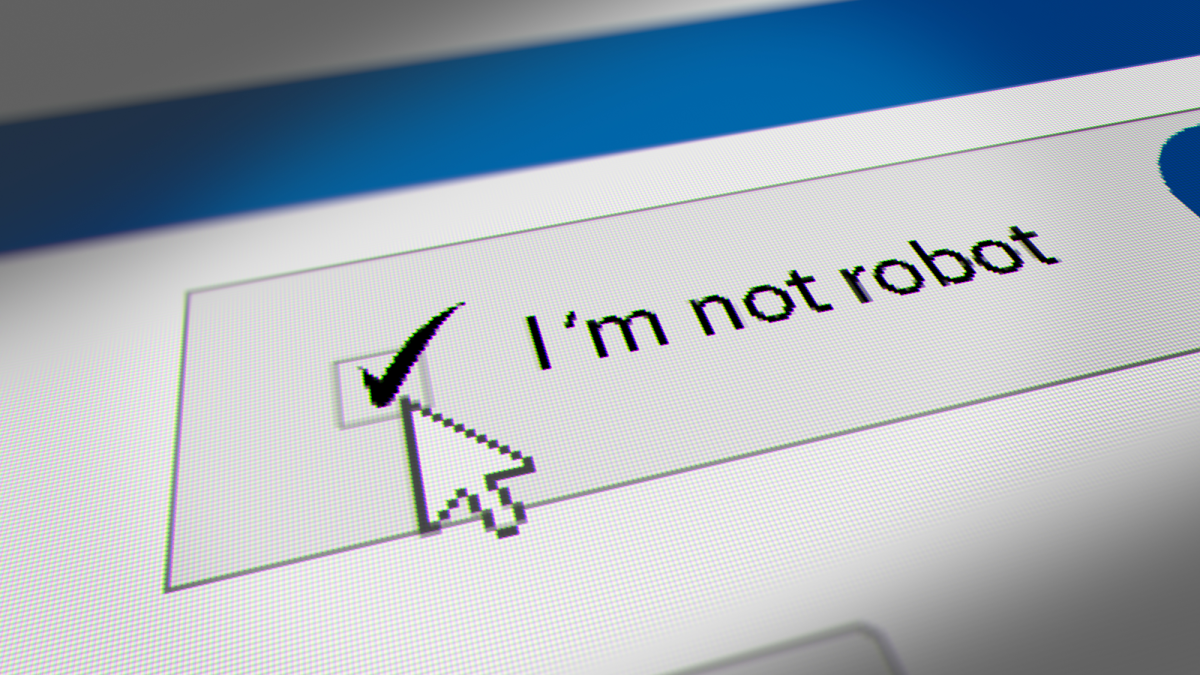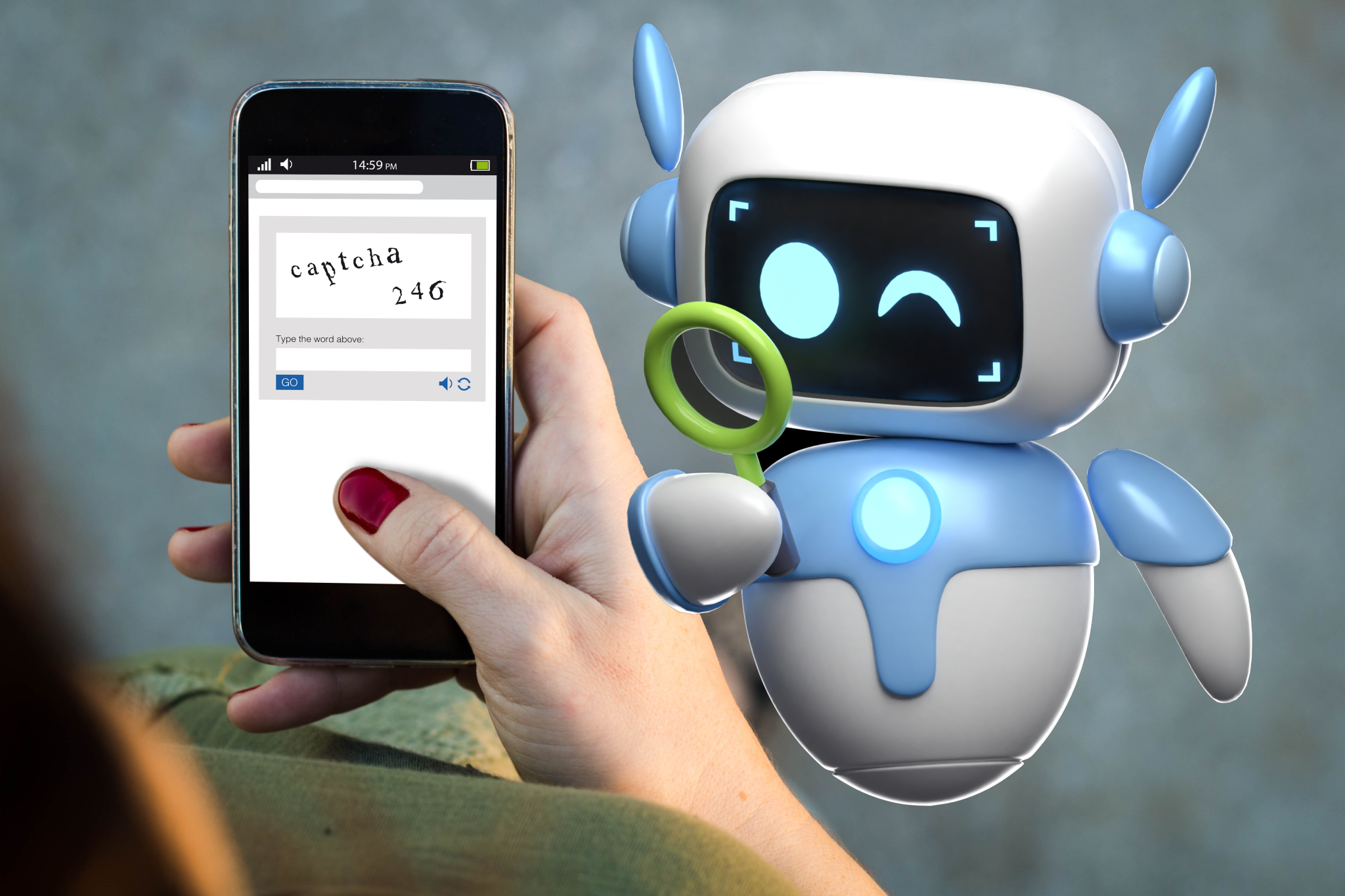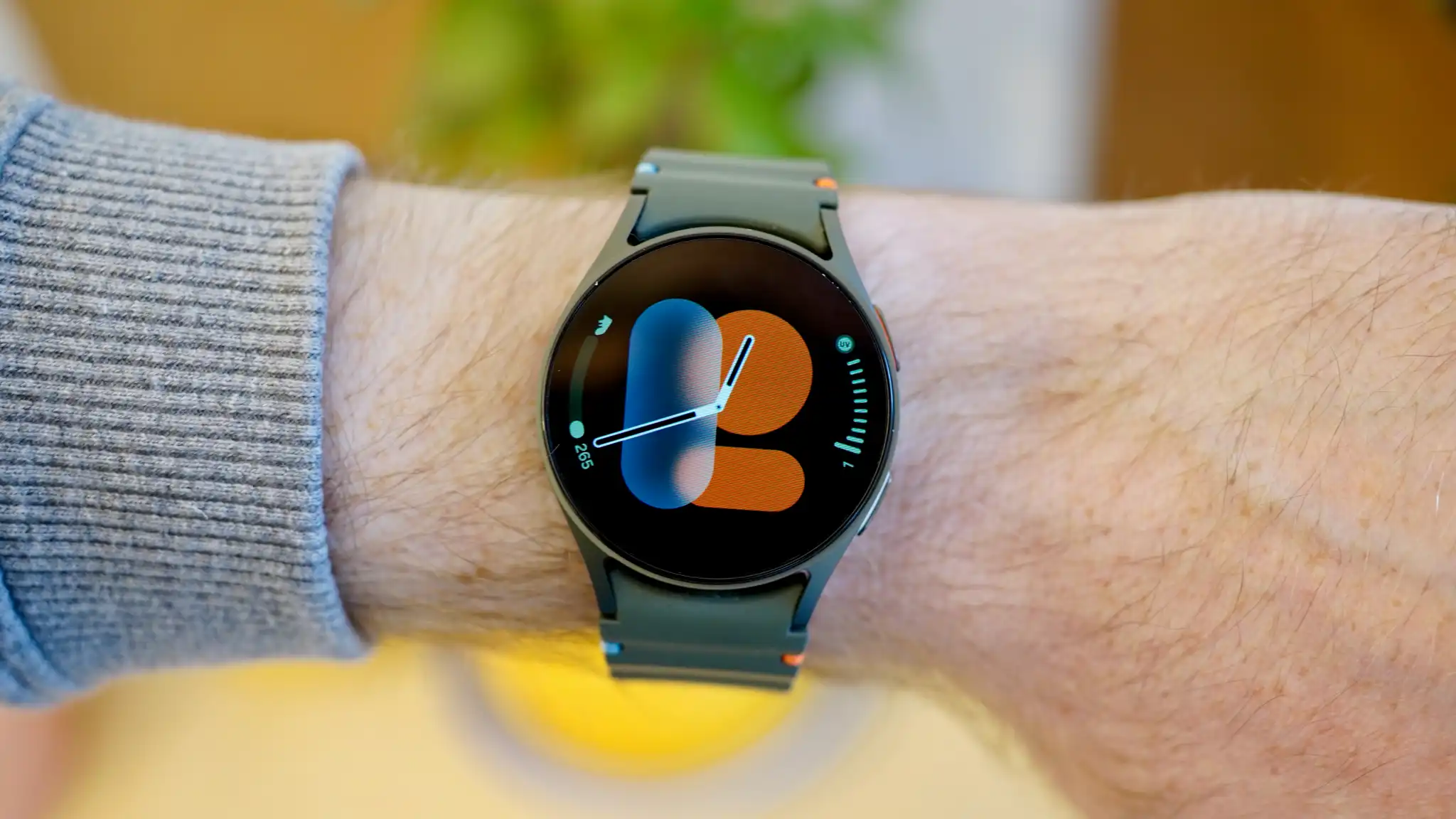Everyone knows the CAPCHA tests on websites where you either have to click on numerous pictures of cars, traffic lights, or bicycles, enter confusing combinations of numbers and letters or simply click to confirm that you’re not a robot. There used to be so many of these tests that it was downright annoying, especially if you needed several attempts.
But have you ever asked yourself whether a robot or an AI could also pass these tests? How does the CAPTCHA know that it was filled in by a human? And what does the term even stand for? Let’s clear up this mystery.
What does CAPTCHA stand for?
The word CAPTCHA stands for “completely automated public Turing Test to tell computers and humans apart” and is therefore a term for an automated, public Turing Test to distinguish humans from computers.
The term Turing Test was coined by Alan Turing, a British mathematician and computer scientist who wanted to use certain methods to test whether machines can think and act like humans. Turing tests can also be used to test AIs for creativity and awareness.
CAPTCHAs have been around since 2000 and are deliberately designed to sound similar to “capture,” as they are primarily used to intercept and filter out bots on websites, for example to avoid spam or prevent automated purchases by bots.
How does a CAPTCHA test work?
CAPTCHAs are usually quite simple, but always require you to fulfil a task. Sometimes you have to recognize certain letters and numbers that have been distorted and enter them manually. In other cases, you have to recognize certain patterns on pictures such as the existence of traffic lights, bridges, or animals.
The tests are always randomized. After reloading the website, a different task should appear each time. This is intended to avoid repetition, which would make it easier for bots to circumvent the system.
It used to be difficult for computers to solve CAPTCHAs, as certain algorithms had to be built in to reliably recognize patterns. However, the constant progress in the use of artificial intelligence has now made it possible for bots to solve these tests easily.

ninefotostudio / Shutterstock.com
So, how does Captcha know that I’m not a robot?
This brings us to the previous question of how CAPTCHAs can still work today, even if they’re generally used less frequently than in the past.
There’s a simple solution to this: moving the mouse. Modern CAPTCHAs use movement tracking to track the movement of the cursor. When a person moves the mouse, the route of the cursor is practically never the same. The movement is never the same speed. Bots, on the other hand, automatically click on CAPTCHA boxes or images in a perfect straight line (for example, from bottom to top directly to the box). Websites can recognize this and block access.
Occasionally, you may have to click on a box that says “I am not a robot” and then solve a more complex CAPTCHA with images again. This is because your mouse movement might’ve been more “robotic.” So next time, try a little more swerving to make it clear that you’re a human.




